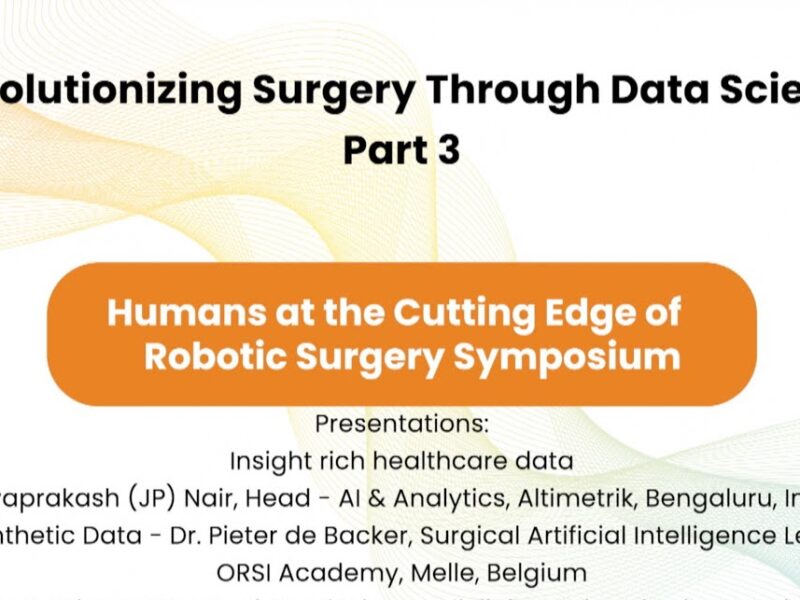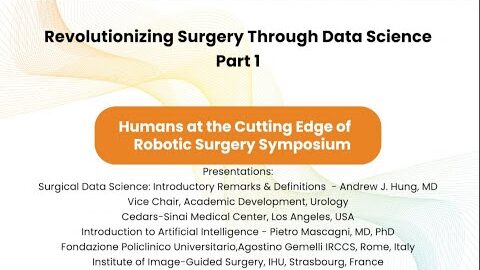#214 Intra-Arterial Renal Hypothermia for Complex Endophytic/Hilar Tumors- Dr. Joris Vangeneugden
This is one of the 2023 KS International Innovation Awards videos selected for inclusion in the Vattikuti Foundation – ORSI Humans on the Cutting Edge of Robotic Surgery Conference, October 6, 7 & 8, 2023 in Ghent, Belgium. Posting does not imply that is has been selected as a Finalist, just that the content will be discussed at the Conference. From the entry: Intra-Arterial Renal Hypothermia for Complex Endophytic/Hilar Tumors Surgeon Prof. dr. Karel Decaestecker
Full title Robot Assisted Partial Nephrectomy using Intra-Arterial Renal Hypothermia for Highly Complex Endophytic or Hilar Tumors: Case series and Description of Surgical Technique
Team Joris Vangeneugdena, Pieter De Backera,b,c, Camille Berquina, Saar Vermijsb, Peter Dekuyperd, Alexandre Mottriec,e, Thierry Quackelsf, Charles Van Praeta, Karel Decaesteckera,d
Affiliations
a. Department of Urology, ERN eUROGEN accredited centre, Ghent University Hospital, Ghent, Belgium
b. IBiTech-Biommeda, Department of Electronics and Information Systems, Faculty of Engineering and Architecture, Ghent University, Ghent, Belgium
c. ORSI Academy, Melle, Belgium
d. Department of Urology, AZ Maria Middelares Hospital, Ghent, Belgium
e. Department of Urology, Onze-Lieve-Vrouwziekenhuis Hospital, Aalst, Belgium
f. Department of Urology, Hôpital Erasme, Brussels, Belgium
Abstract (243 words)
Introduction & Objectives In partial nephrectomy for highly complex tumors with expected long ischemia time, such as deep endophytic or hilar lesions, renal hypothermia can be used to minimize ischemic parenchymal damage. We describe the first case series, our surgical technique and early outcomes for robot- assisted partial nephrectomy (RAPN) using intra-arterial cold perfusion through arteriotomy.
Materials & Methods Ten patients with complex renal tumors (PADUA score 9-13) underwent RAPN with intra-arterial cooling between March 2020 – March 2023. Long clamping times were expected in all cases and radical nephrectomy was considered a valid alternative. Considering the anatomical complexity, three-dimensional (3D) models were used for preoperative planning and perioperative guidance.
Results All surgeries were completed successfully. One case was converted to radical nephrectomy, no other intra-operative complications occurred. Median warm and cold ischemia time were 4 min (IQR 3 – 7) and 60 min (IQR 33 – 75) respectively. Median rewarming ischemia time was 10,5 min (IQR 6,5 – 23,75). Median pre- and postoperative (1 month) eGFR values were 90 ml/min (IQR 78,35 – 90) and 86,8 ml/min (IQR 57,1 – 90) respectively. One case required selective segmental embolization for a pseudo-aneurysm 2 weeks after surgery (Clavien-Dindo grade 3b). No other high-grade complications occurred.
Conclusions We demonstrate the feasibility and to our best knowledge first case series description for RAPN using intra-arterial renal hypothermia through arteriotomy. This approach broadens the scope for minimal invasive nephron sparing surgery in complex renal masses where longer clamping time is to be expected.
See more at: https://vattikutifoundation.com/videos/
Date
August 15, 2020






